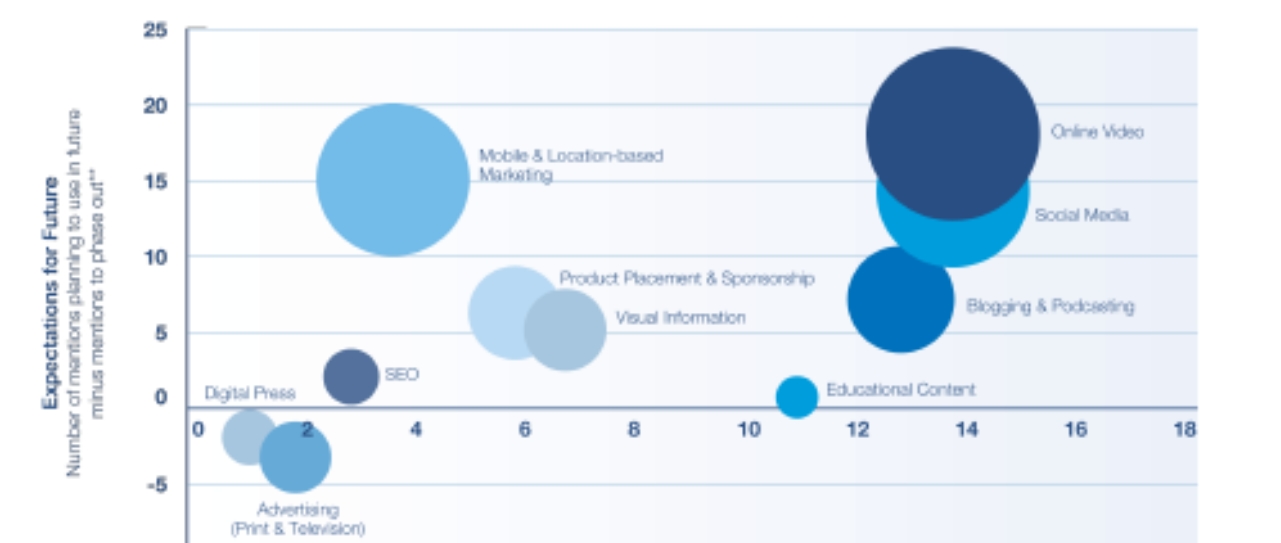How To Structure Your Organization For SEO Success
At SMX West, I sat in on a panel with Adobe’s Warren Lee and he offered some great insights on Enterprise SEO. As a result of this panel, we had some follow up discussions about those challenges, and I asked him to write up some of the things we discussed. The column below is the […]
At SMX West, I sat in on a panel with Adobe’s Warren Lee and he offered some great insights on Enterprise SEO. As a result of this panel, we had some follow up discussions about those challenges, and I asked him to write up some of the things we discussed. The column below is the result.
Enterprise SEO Discussion With Warren Lee, Adobe
Warren is responsible for over ~48 million monthly visits from SEO to Adobe. Warren manages SEO for Adobe.com, Photoshop.com and the many Web properties owned by Adobe.
Prior to Adobe, Warren worked for MOVE inc., where Warren was also an in-house SEO manager responsible for keeping Realtor.com the #1 most visited website in the real estate industry as reported by comScore.
Eric Enge: How do you structure your organization for SEO success?
Warren Lee: A firm awareness of common challenges with enterprise SEO can help prevent SEO disasters before they occur and can enable your search team to create a strategy to achieve the biggest wins.
The main challenges within SEO at large organizations tend to revolve around:
- Cross functional alignment.
- Maintaining focus on the critical initiatives.
- Getting buy-in and support for projects around content growth, optimization, linking, and site architecture improvements.
- Balancing training and process improvements through involvement with the right functional areas at the right times.
1. Cross Functional Alignment
The challenge of cross-functional alignment occurs when SEO expertise is siloed in one functional area within an organization. Marketing and IT are the two most common areas SEO teams sit in.
Given that website, technical, and product marketing decisions all influence SEO performance, teams have an inherent challenge with being strategic and cross-functional. At its core, SEO teams must always be a change agent in an organization – most stakeholders do not willingly (assuming they know how) incorporate search best practices into their daily work.
Search Marketing teams that succeed embrace this challenge by making stakeholder engagement and full SEO integration a priority across the organization. This requires that teams first understand all functional groups whose work impacts SEO in order to influence the right stakeholders at the right time.
The ultimate goal being that SEO DNA be integrated early & often into every significant digital asset at your company. Doing this requires a team with the right skillset within an organizational structure and company culture that supports their agenda.
Once that’s in place, SEO teams need to evaluate their own scope of influence across the organization and build relationships with critical partners. Critical partners in a large organization include: Paid Search, Site Search, Social Media, Digital Analysts, IT, Web Ops, Web Security, Legal, Product Management, Product Marketing, Editorial, QA, Mobile, and Remarketing & Site Testing teams.
There is always more to do in Enterprise SEO and therefore all decisions have an opportunity cost. As such, positive influence and organizational change means being savvy with guarding your time and priorities so you keep a balance between the inevitable urgent -hoc requests not crowding out critical & strategic projects.
2. Maintaining Focus On The Critical Initiatives
The solution to finding a balanced level of service is developing a team culture where project priorities are driven by data & results and supported by effective training, processes, and communication with stakeholders.
In practice, a data-driven decision process looks at the key metrics and KPIs for any project, determines a baseline on which to judge success, and determines appropriate SEO levers to pull based on their impact on metrics, and then puts a realistic project plan in place.
We’ve implemented this process in the last year as a result of hiring a passionate and skilled search team, using our own Digital Marketing Suite, and engaging consistently with both data and stakeholders to influence change.
We also borrowed key elements of the Agile software development process including twice-weekly Scrum check-ins, a running list of possible projects (currently over 150) where we pool the collective knowledge and vote quarterly on priorities, and a bi-weekly Sprint for each major project we’re working on.
A useful method to maintain priority focus involves filtering projects based on the level of impact on the few essentials of SEO: site architecture, internal and external linking, and new or existing content.
Additional projects and criteria include process and workflow optimization, co-optimization of Paid and Organic strategies, and Social Media team engagement. I have previously written about a process for identifying your company’s critical areas of focus and evaluating if your resources are aligned to enable change.
3. Getting Buy-In
To fulfill the vision shared above requires buy-in and support for content growth and optimization, linking, and site architecture improvements.
Recent research by Rebecca Lieb at the Altimeter Group shows that SEO is often a low priority and therefore doesn’t receive as many corporate resources as online video, social media, or mobile marketing initiatives.
Organizations that overcome this do so through sharing wins to show the value of your involvement and sharing failures or site-wide challenges that impact key metrics.
Highlighting past failures or calling out future ones (if changes aren’t implemented) can be incredibly effective at getting buy-in. In particular, showing what competitors are doing that you’re not is a great catalyst. Taking it a step further to build their practices into strategy and turning that around to teams to implement can demonstrate significant value.
These both show the cost of not being strategic about SEO within your organization. And then be sure to share wins – you can turn stakeholders into SEO ambassadors and fans of your team’s work by aligning up-front on critical KPIs and celebrate mutual success, with data whenever possible.
Never take credit for search wins alone, and be mindful to thank others for their support in the wins, and you will find that getting buy-in becomes significantly easier.
4. Balancing Search Team Involvement
Balancing involvement across global stakeholders is a challenge for every Enterprise SEO. Three strategies can help: training, accountability charts, and consistent meetings.
Ongoing cross-functional training is critical to impart SEO knowledge & ownership deeper into your org. Without it, a little knowledge (read: ignorance) will go a long way and the implications of not integrating SEO into business processes like content creation, information architecture, or social media linking won’t be fully understood.
Concepts you might cover in training could include:
- How natural search engine traffic is critical to the success of your organization.
- Successful SEO cannot be achieved by the SEO team or marketing consultants alone, it comes from team work with everyone who influences and touches all digital assets – whether this be website content, images and videos, off-site channels like blogs, social, or YouTube.
- If anyone is making changes to the site, there should be some level of interaction with the SEO team – we say “early and often”. The SEO team can prioritize how much interaction, so it’s better to over-communicate than to under-communicate.
- Custom tailoring training for specific teams, such as Editorial, QA, Social Media Leads, or the User Experience team on which SEO best practices impact their work.
It is also important to be mindful not to train yourself completely out of communication with critical partners.
So while creating custom cross functional SEO training is valuable, it is also necessary to establish integrated processes for SEO team involvement within cross functional workflows.
Finding the right touch points within other teams processes is a great method to balance training with search team involvement and helps to ensure that you stay connected with key partners.
After providing training to appropriate groups, it is very helpful to analyze their workflow processes and determine when SEO should be involved & when they can rely on your training.
When other cross functional processes are clearly understood by the search team, the use of accountability charts, such as a DACI or RASCI, is helpful towards finalizing steps towards balanced cross-functional involvement. Integrating with other team’s workflow processes in this way will not only help ensure that you stay connected, but this combined with regular meetings also ensures that SEO is always involved when needed.
Summary
In sum, to overcome the common challenges that can crop up in large organizations, SEO should be involved early and often across well prioritized initiatives. SEO evangelism, relationship building and aligning on key metrics is really critical to creating a culture of SEO.
Eric Enge: Thanks Warren!
Contributing authors are invited to create content for Search Engine Land and are chosen for their expertise and contribution to the search community. Our contributors work under the oversight of the editorial staff and contributions are checked for quality and relevance to our readers. The opinions they express are their own.
Related stories
New on Search Engine Land

